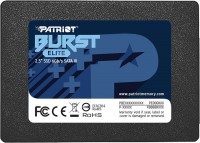What is the difference between M.2 NVMe x2 and x4 SSDs?

PCI-Express lines
Modern solid-state drives of the M.2 form factor are divided into three types according to the connection interface: SATA, PCI-E x2 and PCI-E x4. They differ not only in data transfer speed, but in compatibility (or vice versa, incompatibility) with various models of laptops and motherboards for desktop PCs. Also, M.2 SSDs may differ in size, or rather length (4, 6 and 8 cm). Let's take a closer look at each of the three connection interfaces.
SATA3 are regular slow SSDs (up to 560 MB/s), only made in the modern compact M.2 form factor instead of the old-school 2.5-inch. Compatible with absolutely all motherboards and laptops with an M.2 connector.
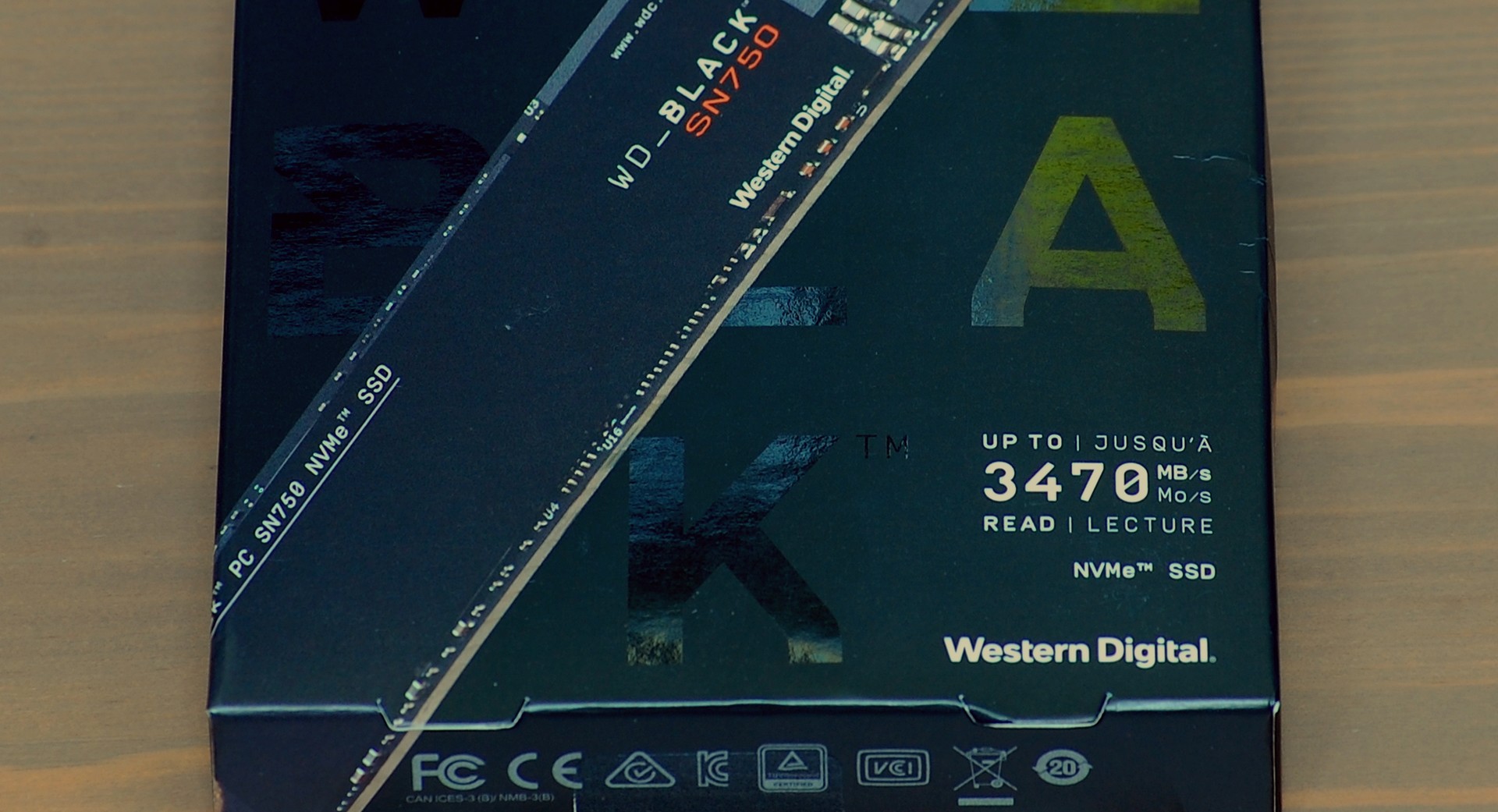 |
NVMe 3.0 x2 - budget high-speed SSDs operating on the PCI-E 3.0 bus. A single PCI-E 3.0 lane has a theoretical throughput of 8 GT/s (gigatransactions per second), which equals 985 MB/s. The x2 marking implies two lines, that is, speeds up to 1970 MB/s. In practice, the speed is usually slightly lower. Motherboards of previous generations, as well as many modern gaming laptops and ultrabooks, have an M.2 NVMe x2 slot.
 |
NVMe 3.0 x4 is the fastest M.2 SSD at the moment, using four PCI-E 3.0 lanes (up to 32 GT/s or 3940 MB/s). The use of such fast solid-state drives sometimes imposes restrictions on other motherboard connectors. For example, some PCI-E x1/x4 or SATA slots may be deactivated.
NVMe 2.0 x4 - SSDs running on the old PCI-E 2.0 protocol are no longer available for sale. But there are Intel LGA1151-v2 motherboards on the H310 chipset, which are equipped with an M.2 PCI-E 2.0 x4 slot (500 MB/s per line). An NVMe 3.0 x2 SSD installed in such a slot will be limited to 1000 MB/s, and x4 - 2000 MB/s.
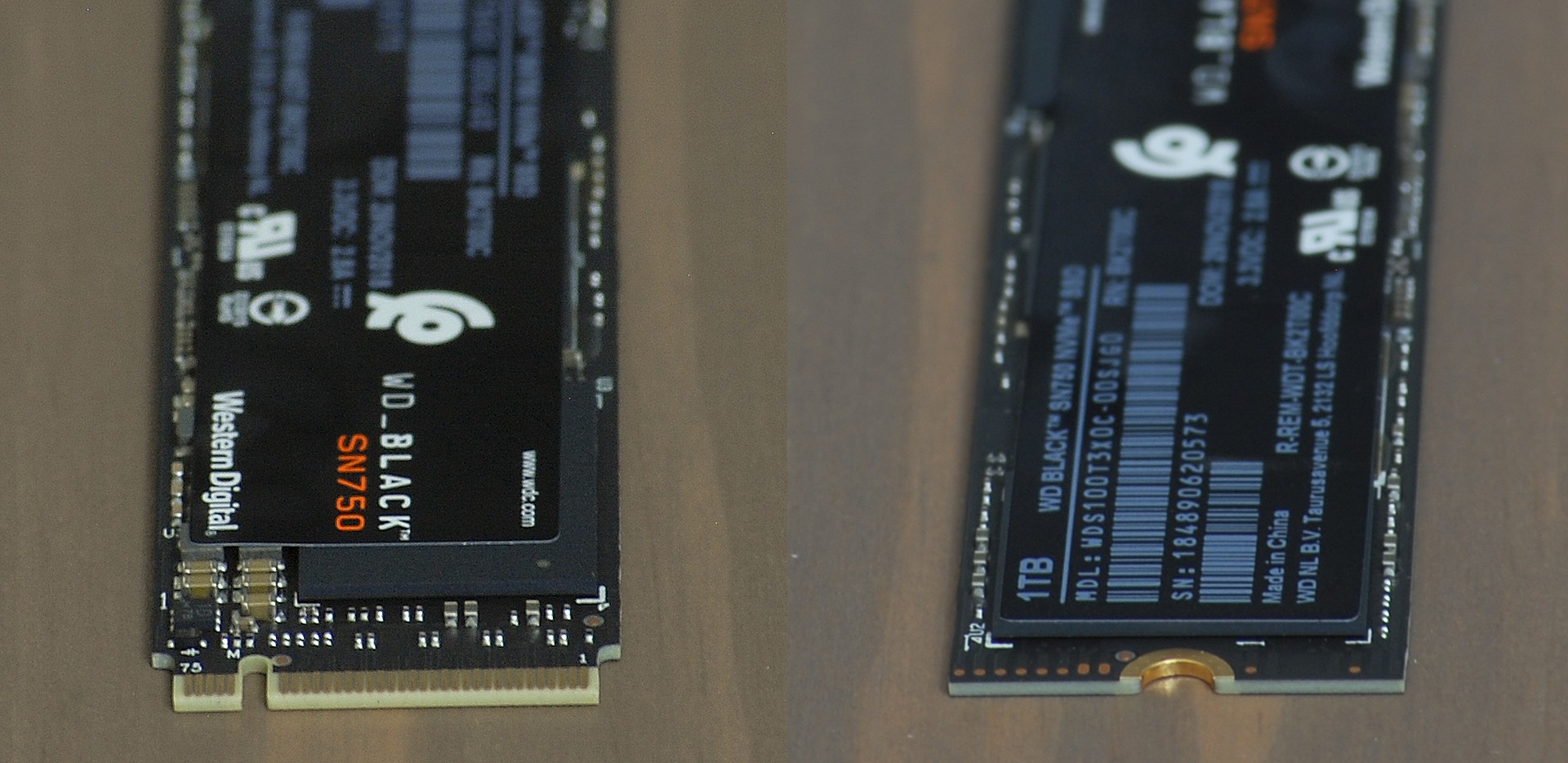 |
NVMe 4.0 - the first motherboards based on the AMD X570 chipset with support for the fourth generation of the PCI-E bus should go on sale in the near future. Compared to its predecessor, its throughput has doubled - to 16 GT/s. For SSD manufacturers who have hit the PCI-E 3.0 speed ceiling, this will once again give them a free hand. It seems that we won’t have to wait long for the announcement of solid state devices with speeds over 4000 MB/s.
It's time to move from theory to practice: we will conduct tests using the example of one of the fastest M.2 SSDs at the moment - WD Black SN750 (NVMe x4).
| Stylus.ua | 3 290 ₴ | To Store |
| Цифра | 3 191 ₴ | To Store |
| Technoceh.com | 11 000 ₴ | To Store |
WD Black SN750 is the flagship M.2 NVMe SSD of the American brand. Let us recall that Western Digital, widely known primarily for its HDDs, acquired SanDisk several years ago and began actively developing its own solid state drives. The SN750 model is the second iteration of the Black SSD, which has become not only faster, but also cheaper. There are four capacities to choose from: 250 GB, 500 GB, 1 TB and 2 TB.
The Black SN750 is built on a proprietary three-core WD/SanDisk controller and 64-layer SanDisk 3D TLC BICS3 flash memory (the number and density of chips depends on the size of the SSD). Additionally, a DDR4 buffer memory chip is provided, the volume of which is 256 MB for every 250 GB of SSD capacity (for example, 1 GB for a 1-TB SSD model). In addition, two configurations are available - without a radiator and with a passive cooler designed by EKWB, a renowned manufacturer of life-support systems.
The terabyte version claims the highest sequential read and write speeds: 3450 and 3000 MB/s, respectively. This automatically makes the WD Black SN750 one of the fastest SSDs on the market. The 500 GB and 2 TB versions are only slightly inferior in linear speed to the terabyte version, but the 250 GB version is already noticeably behind (3100/1600 MB/s). However, it is still ahead of most competitors of a similar size.
Like other SSDs based on TLC memory, the Black SN750, when sequentially writing very large files (more than 12 GB), slows down the speed, but only by half (up to 1500 MB/s), while many competitors drop by three to five times. Then the rim needs a short rest time to restore its original speed. Overall, the WD Black SN750 is one of the most interesting M.2 NVMe x4 SSDs at the moment. Pleasant bonuses are a 5-year warranty, a high declared rewriting resource (600 TB for a 1 TB model) and a functional proprietary WD SSD Dashboard utility.
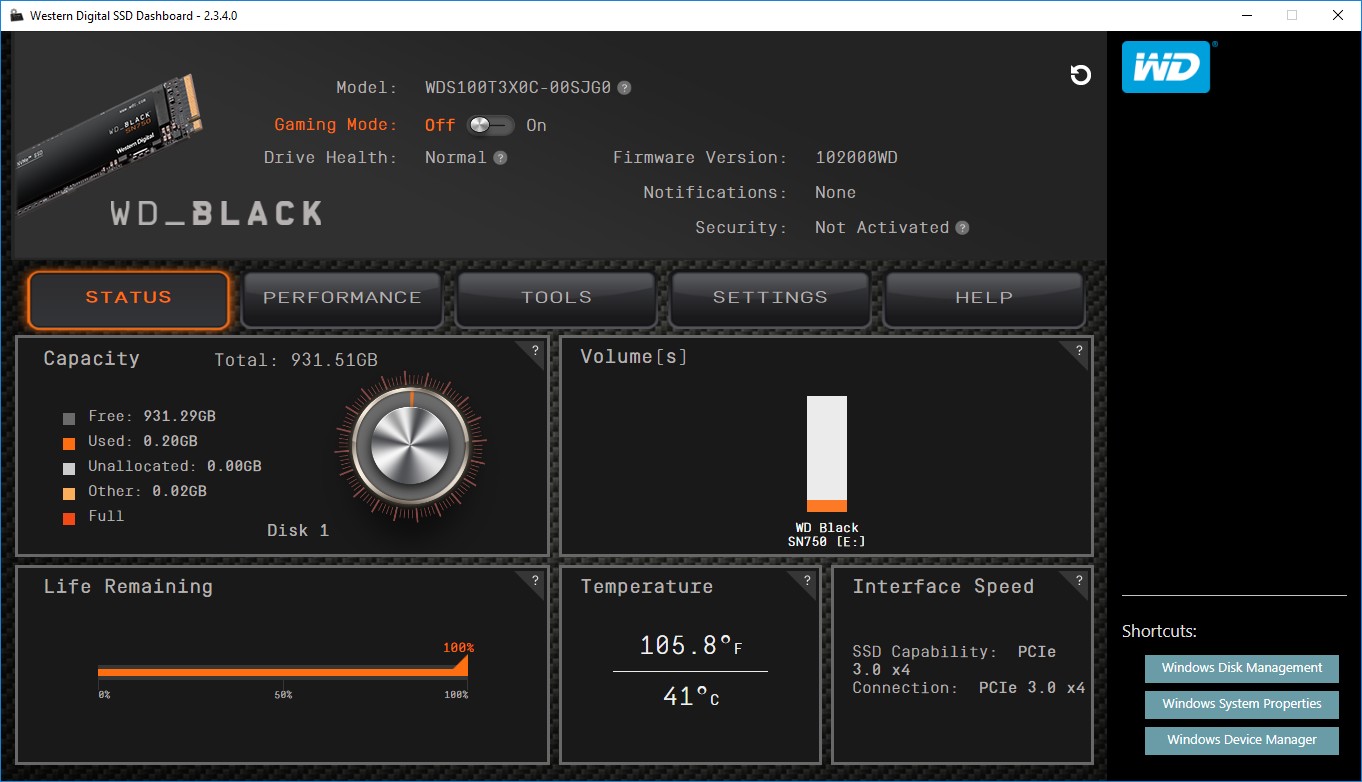 |
Test bench configuration
- processor - AMD Ryzen 5 Pinnacle Ridge 2600X BOX Price from 9 632 up to 9 870 ₴;
- water cooling - SilverStone Tundra TD02-RGB ;
- motherboard - ASRock B450 Steel Legend Price from 4 203 up to 5 460 ₴;
- RAM - Apacer DDR4 1x16Gb EL.16G2V.GNH Price from 1 282 up to 2 155 ₴;
- video card - INNO3D GeForce RTX 2060 TWIN X2 ;
- solid state drive - WD Black SN750 NVME SSD WDS100T3XHC 1 TB with radiator Price from 3 191 up to 11 000 ₴;
- HDD - WD NasWare Red WD40EFRX 4 TB CMR ;
- power unit - Cougar CMX CMX850 ;
- frame - Cougar Turret RGB black .
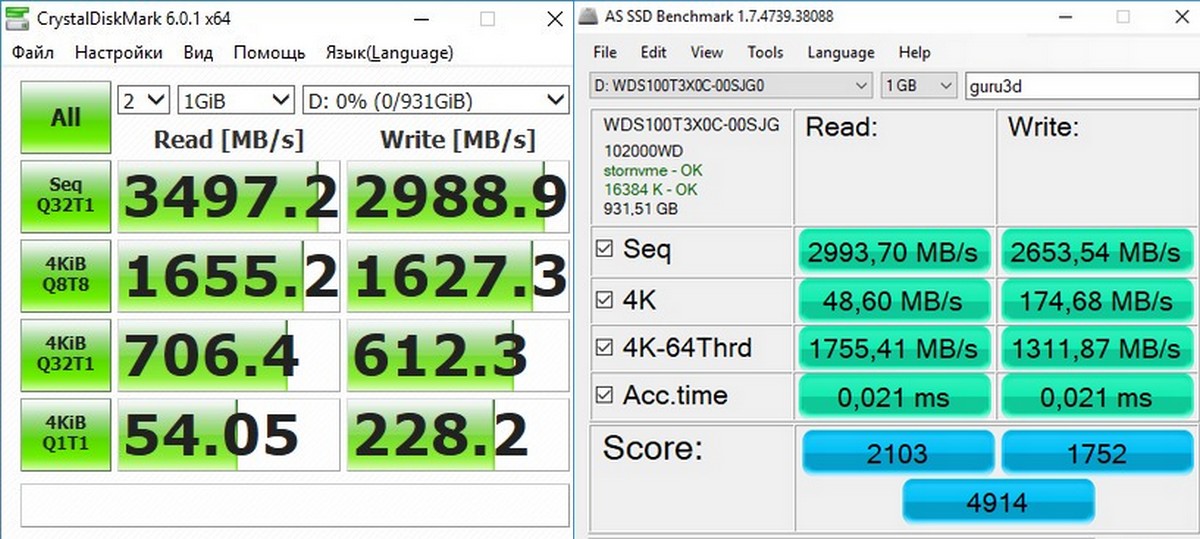 |
Test results
Our test motherboard ASRock B450 Steel Legend has two M.2 connectors with support for NVMe 3.0. True, only one of them (the upper one, which we will use) is full-speed x4 and with a metal radiator, while the second is half-throughput x2 and without cooling.
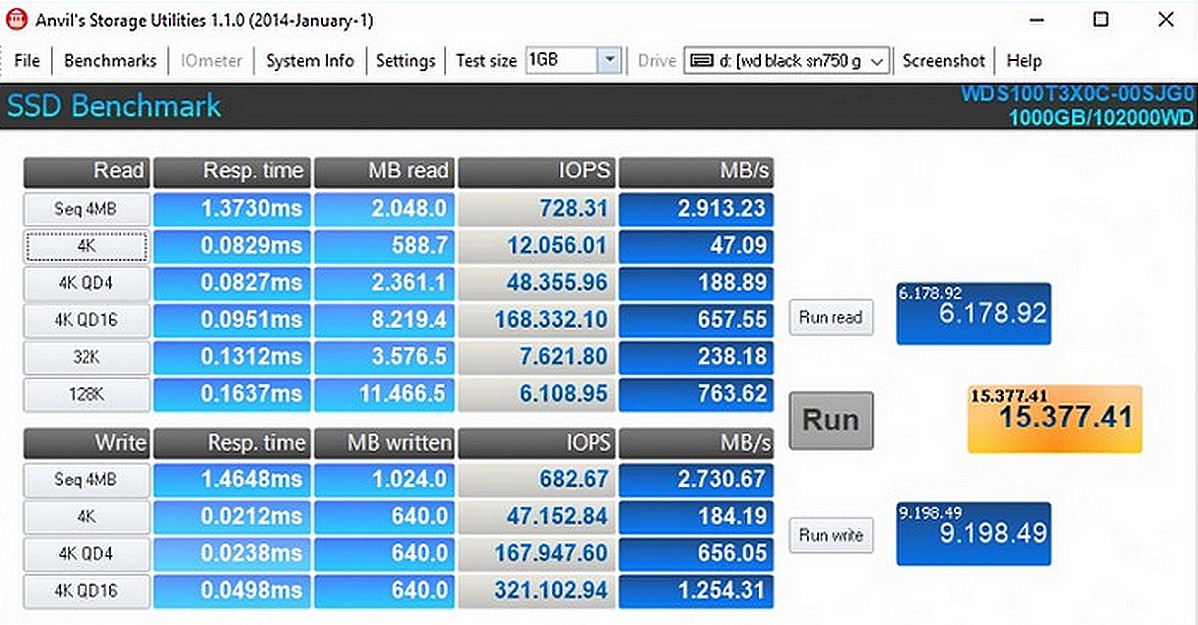 |
The following benchmarks were used to test the WD Black SN750 SSD: Crystal Disk Mark to measure sequential read and write speeds, AS SSD Benchmark to measure access times, Anvil's Storage Utilities to display IOPS results, and AIDA64 Disk Benchmark to test virtual SLC caching.
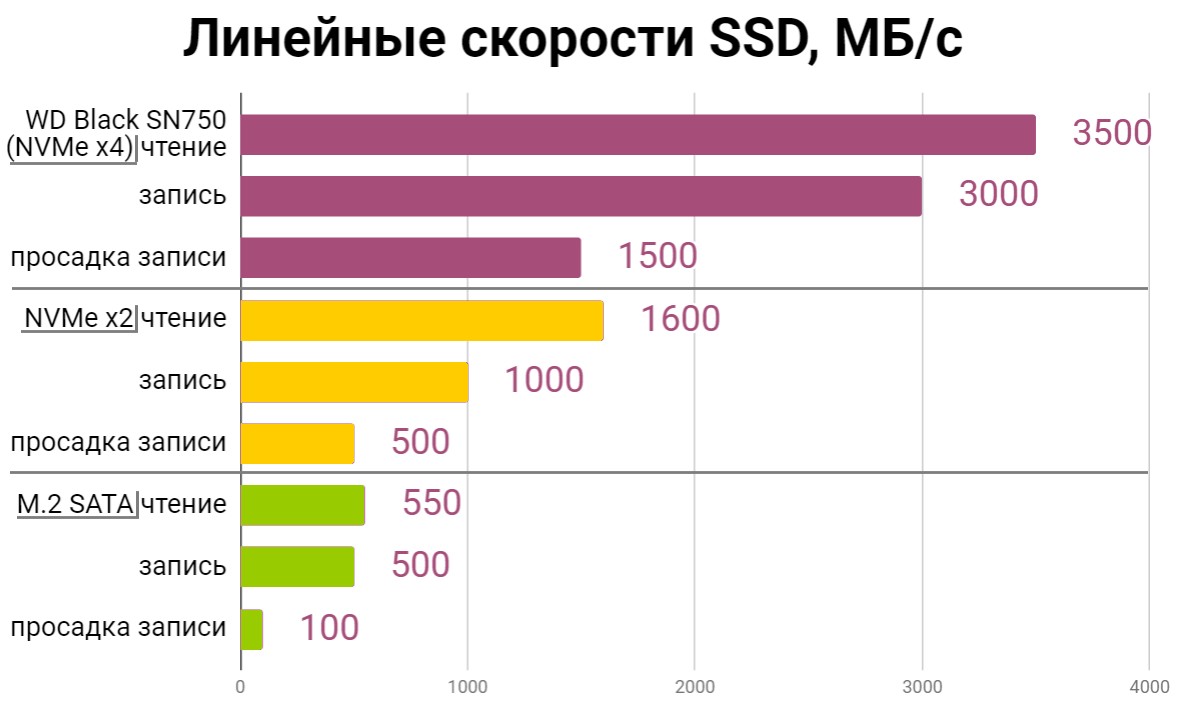 |
Thus, in Crystal Disk Mark, the linear reading speed turned out to be even higher than declared (almost 3500 MB/s), and the linear reading speed almost exactly corresponds to the declared 3000 MB/s (the few megabytes per second missing to the round number can easily be attributed to a statistical error) . An additional retest of the sequential write speed was carried out in AIDA64 Disk Benchmark and showed a decrease in the write speed from 3000 to 1500 MB/s after exceeding the volume of the virtual SLC array.
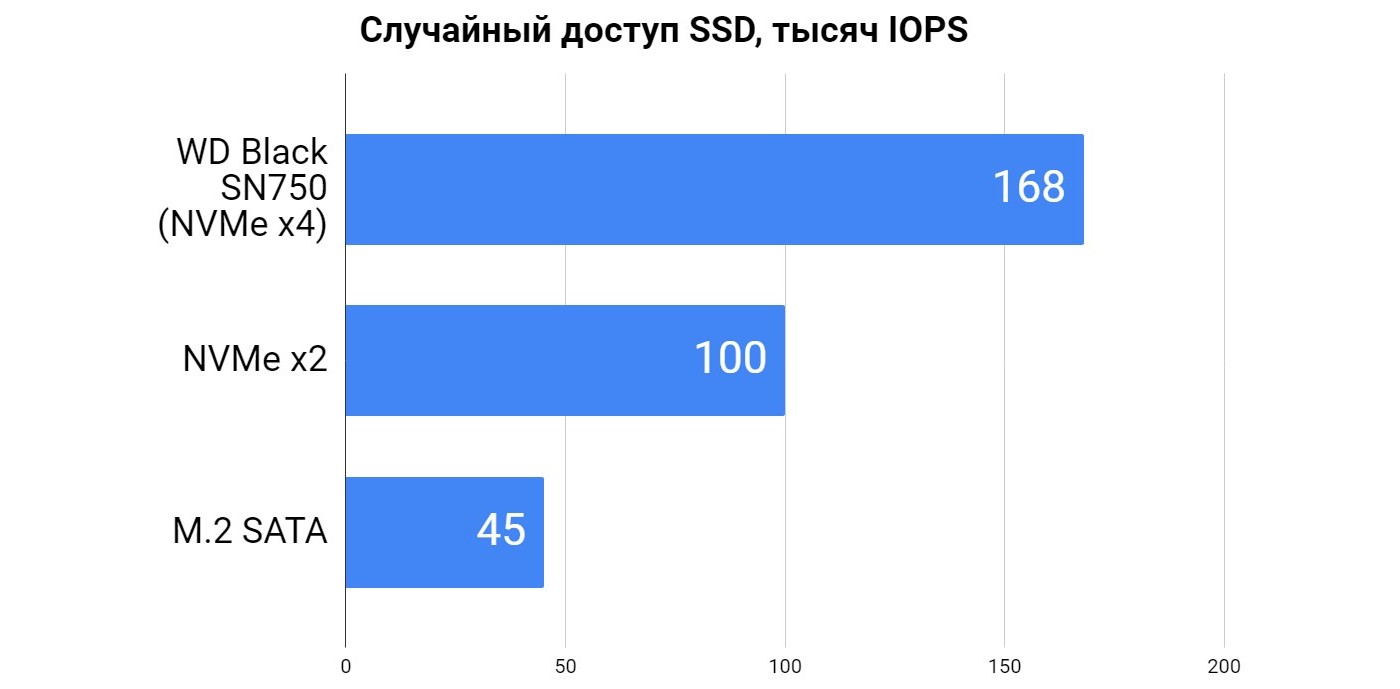 |
In turn, the AS SSD Benchmark and Anvil's Storage Utilities applications traditionally underestimate linear speeds compared to CDM. But the first showed ultra-fast file access time on the SSD - only 0.02 ms, and the second - the speed of processing the smallest files as much as 168 thousand IOPS (Input/Output Operations Per Second or the number of input/output operations). Simply put, this SSD spins and spins small files as lightning fast as an experienced thimble player.
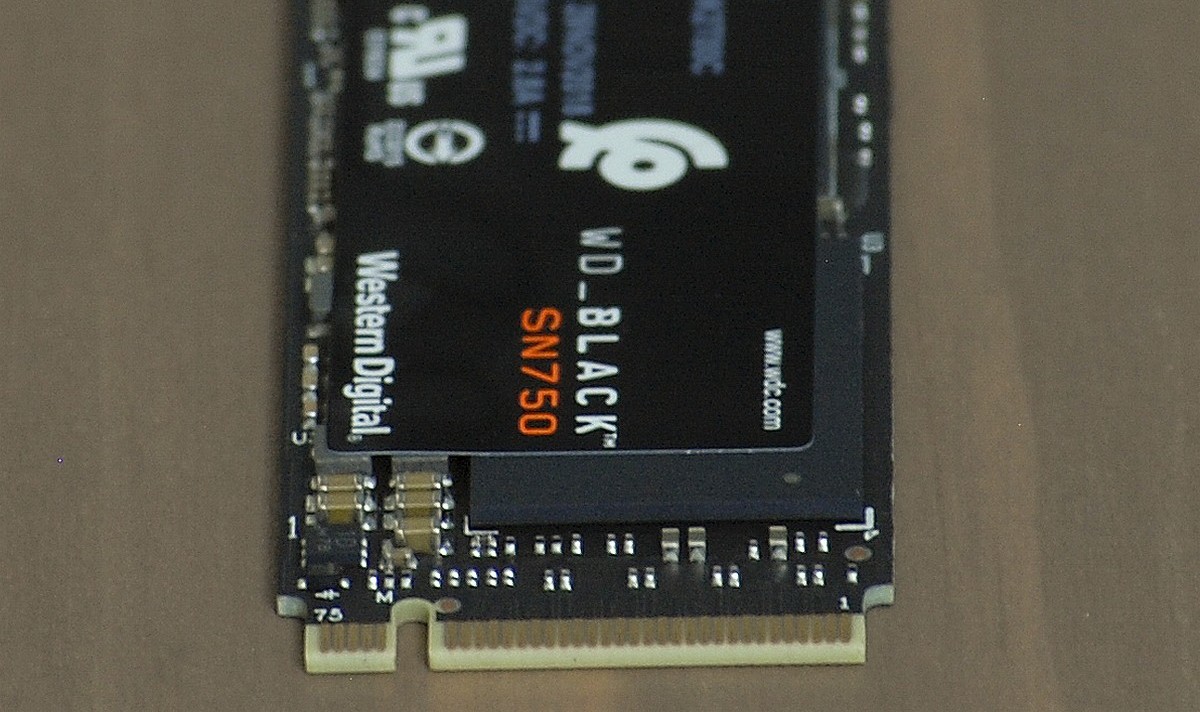 |
conclusions
The final comparative diagrams allow you to clearly evaluate the speed performance of the WD Black SN750 with an NVMe x4 bus against the background of solid-state drives of other formats - M.2 SATA and NVMe x2. The advantage of four PCI-E lanes over two and, moreover, over the SATA3 bus is significant and undeniable. Buying a slow M.2 SSD in 2019 is at least somewhat justified only because of an outdated motherboard or laptop. If your PC is equipped with an NVMe 3.0 x4 slot, then it is wiser to opt for such a high-speed drive, since the gradual reduction in prices contributes to this. You will definitely be pleased!
Articles, reviews, useful tips
All materials

































